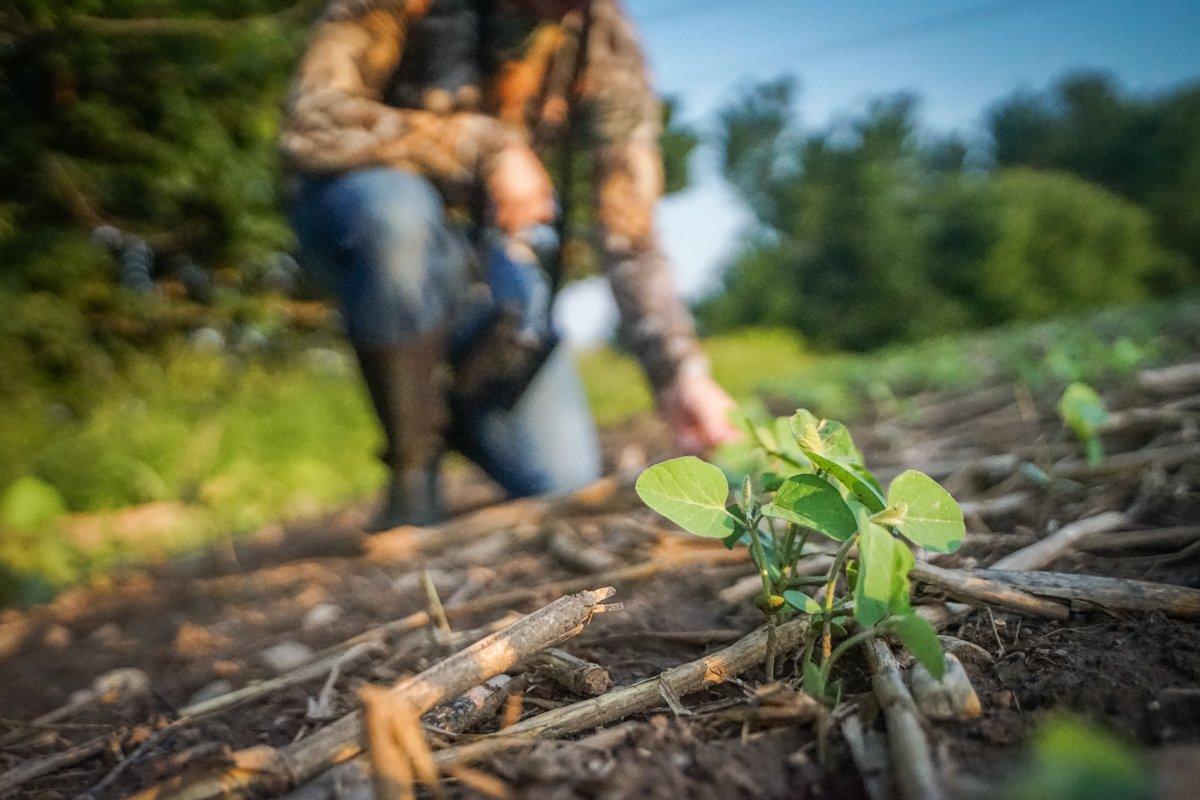We all like to see animals, but overpopulation is a bad thing. Here's how to tell if your herd management needs work
Few hunters complain about seeing too many deer. But the reality is, extremely high deer densities are detrimental to quality habitat, and when habitat declines and less food is available, it's not a good thing — and it will ultimately impact your hunting success. On one property I hunt, we have too many does. We've attempted to increase our harvest but haven't been able to keep up. Our rut intensity has suffered in recent years because of it, despite having great weather conditions. Bucks have been able to find does quite easily. A more balanced buck-to-doe ratio should translate to more competition and increase average travel distances for bucks to find estrus does.
Deer populations have skyrocketed in certain areas because of declining hunter participation, urban sprawl and insufficient doe harvest. If you're not sure whether overpopulation might be affecting your hunting spots, there are a few symptoms to look for. You can survey resident deer populations through trail cameras and personal sightings, and by evaluating browse lines on food plots, agricultural fields and natural vegetation. These methods aren't precise or foolproof, but they should give you a better picture of your resident herd.
1. Symptom: Loads of Trail Cam Pics
While it's fun to conduct trail camera surveys, these can greatly skew interpretations of deer numbers if not done correctly.
To take a more accurate reading of how many deer call your land home, put more stock into trail camera surveys after velvet shed, around early to mid-September. By this time, bucks will have more or less settled into their fall ranges. Research shows that bucks break up their bachelor groups and sometimes disperse into different ranges during fall, while does mostly live in the same general area year-round.
After velvet shed, place Spartan trail cameras on food plots, scrapes and trails. Pay attention to daylight movement for an accurate estimate of deer living on your parcel. Photos taken in the middle of the night can create the impression that a buck is living on your land when, in reality, he may just be passing through from a nearby property.
2. Symptom: Astronomical In-the-Field Sightings
Trail cameras are great tools, but they don't catch every deer. Use your own personal sightings to help determine deer numbers, too. Glass carefully with good optics. And keep in mind this method also isn't fool proof.
For example, if you take a drive during a summer evening and see deer in every ag field within a few miles (including yours), the area probably has a high deer density. If, however, you have the only hot summer food source in the area - such as soybeans - when all the other fields contain young corn, most of the local deer are probably on your property. Your bean field is the limited summer resource, and deer numbers reflect that.
Once early fall hits and those soybean leaves turn yellow, deer will venture elsewhere for more attractive browse (like those neighboring cornfields). Pair changing foods with buck dispersal, and you have a recipe to be very confused when deer disappear. Think critically about food sources, and which ones are popular when you conduct your survey.
Making connections with neighboring landowners can also be important to sound deer management. Not only are landowner cooperatives great for managing bucks, cooperatives also help landowners decide how many antlerless deer must be taken. If a handful of neighboring landowners collectively own 1,000 to 1,500 acres, they should discuss population management goals and objectives.
3. Symptom: Detrimental Over-Browsing
Finally, closely observe preferred native browse, food plots and crop fields for over-browsing. If food sources are spread out and surrounding properties offer good browse, it will be possible to take accurate approximations of deer numbers. Walk rows of soybeans close to timber or field edges to look for nipped-off leaves. Continue walking into the middle of the field and observe browse. If large soybean fields are taking a hit, too many deer could be the issue.
A browse cage and trail camera will tell the story in food plots. Create a food-plot exclusion cage with a few feet of chicken wire, enclosing a 2-foot-by-2-foot area. Be sure deer can't reach into the cage. If plants outside the enclosure are short, but those inside are tall, over-browsing — and therefore overpopulation — could be an issue. Monitor the area with trail cameras.
Observing browse is an especially great strategy if crops are absent. But judging whether deer are hammering native browse can be difficult unless you are savvy and recognize preferred browse species. Berry briars, ragweed and even flowers such as trilliums can give you an idea if there are too many deer.
The Prescription: Fill More Tags
Discovering whether your land has too many deer is usually not an overnight process. Depending on the time and available resources, it can take months or years to fully understand herd dynamics. There are many factors to consider before making a snap judgement on your deer numbers, so consult your state game agency (which is often free) or private sector biologists, who can analyze the property and provide advice. Combine that information with trail camera evidence, in-person sightings and browse line observations to help you determine next steps. And if there are too many deer, there is a silver lining: It's time to do a little more shooting.
Don't Miss: Why You Should Keep a Hunting Journal
Check out more stories, videos and educational how-to's on deer hunting.










